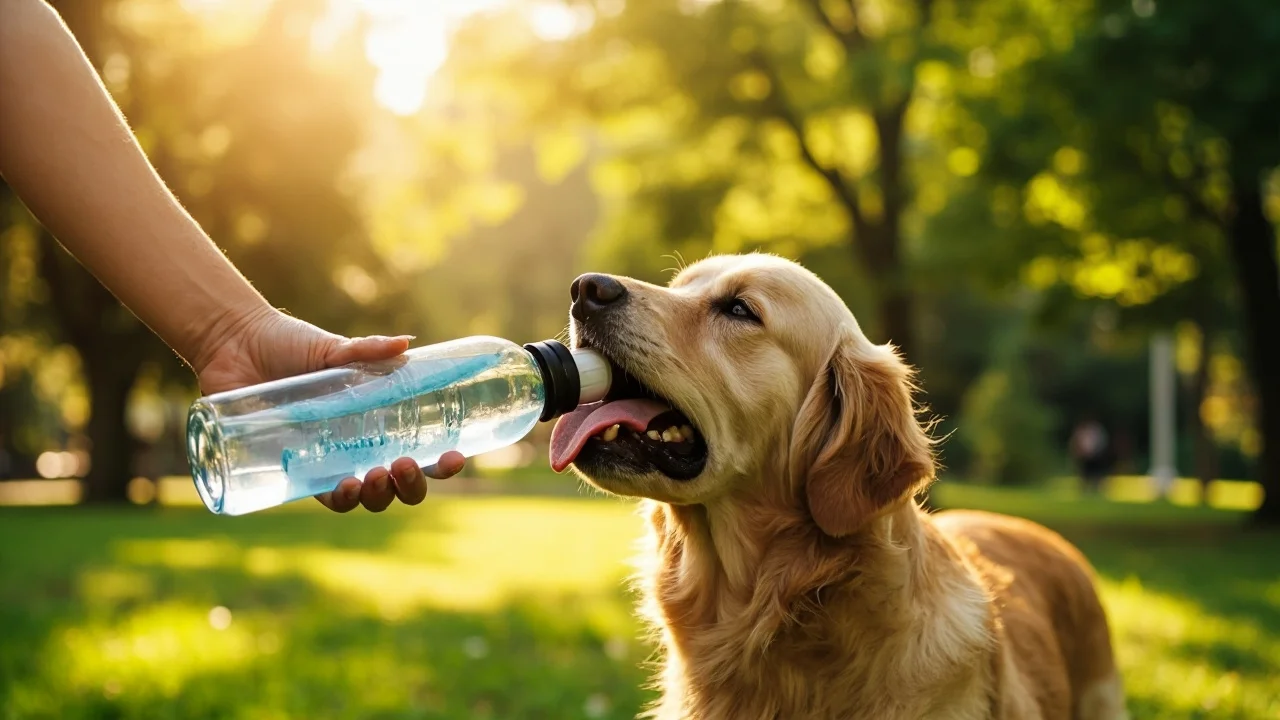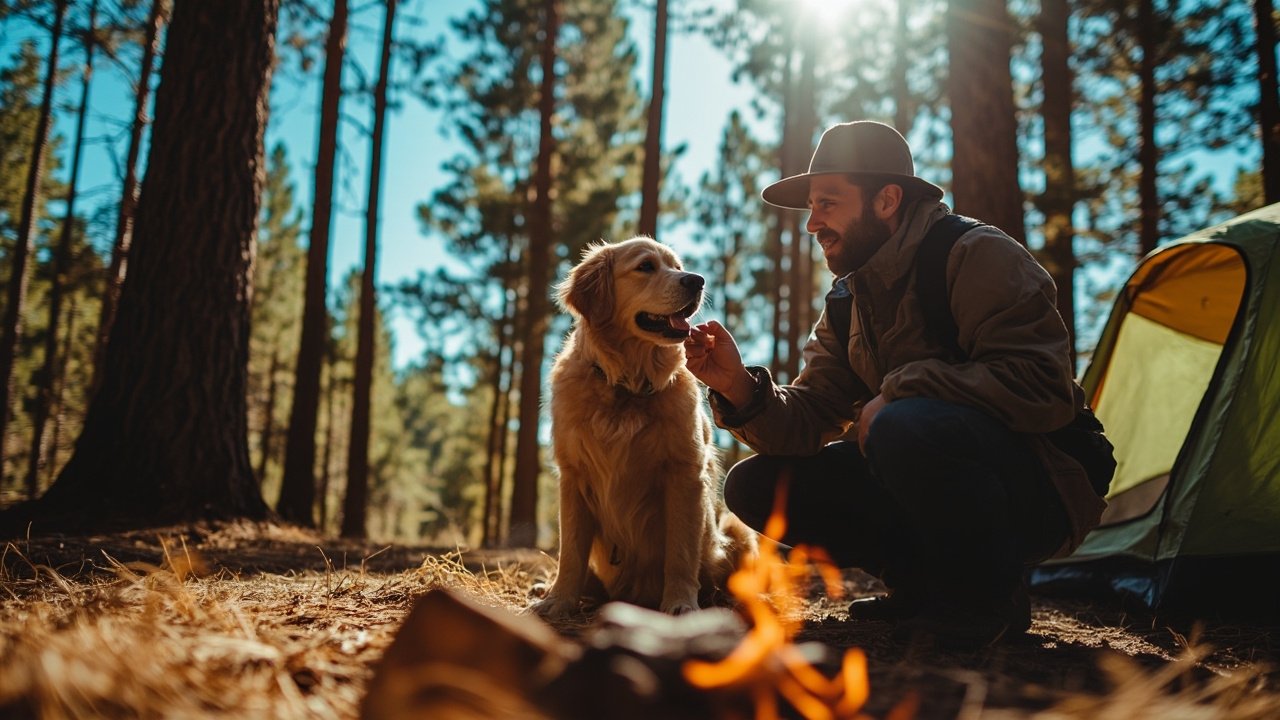I know how good it is to go out for a walk with your pet, especially when the weather is nice. But, when the heat pops, you need to give extra attention to ensure that the moisture of your pets during this time. I have been in situations where, after finding out that my dog and I was exhausted, and with his tongue sticking out, I noticed that the moisture was more serious than I thought. The one that seemed to be just an “out of fun”, has turned into a call for the need of special care.
I thought back to the day when the sun was so strong that, after a half hour of walking, I realized that my dog was very tired. I was worried, and immediately stopped to give the water to him, but he was so much exhausted that it took me a while to get a drink." It was a learning experience for me. Since then, it walks on hot summer days require more attention than I thought it would, and that's why I decided to write this article, to help the other guardians, to ensure the health and comfort of their pets during their trips.
Summary of the Content on
In this article, I'm going to share with you simple tips and effective for you, you can also it can give you moments of entertainment for your pet with safety, security, and avoiding any of the health risks of it, such as dehydration and heat stroke. By following these guidelines, you'll learn how to ensure that your trips are not only fun, but also safe and healthy for your pet.
What is the moisture of your Pets, and Why is It Crucial?
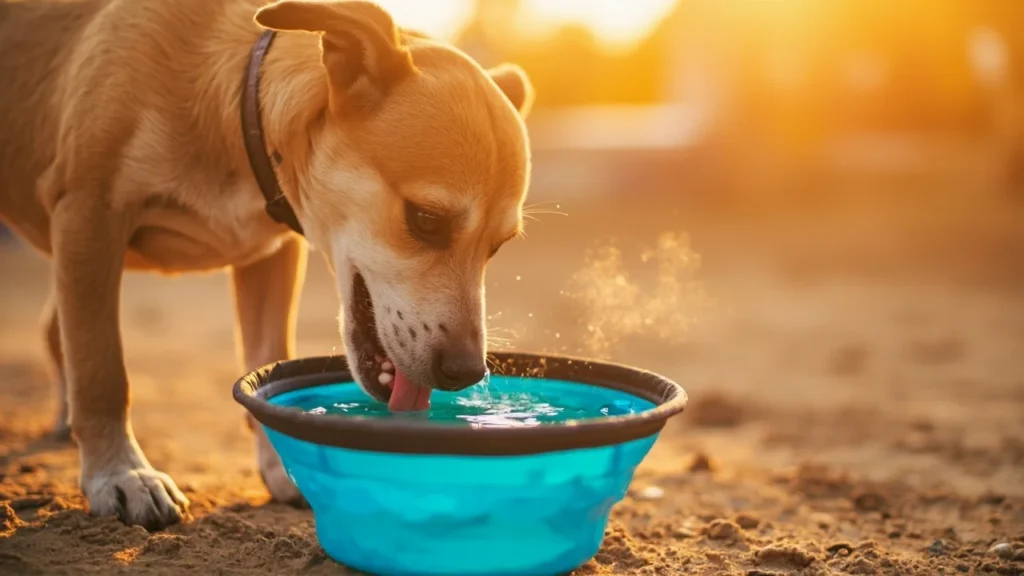
To hydration-of-the presidents-elect training seminar it is essential for the proper functioning of their bodies, and this makes it all the more important in the hot summer days. Let's say the body of your pet, it works in much the same way as his own. They, like us, they need the water for a variety of functions such as the regulation of temperature, and the transport of nutrients and elimination of toxins. But, when the weather is hot, the body of them misses the net very quickly, and there is no suitable replacement, the health of your pet, you may be seriously compromised.
When the temperature increases, so does the risk of dehydration is also present. And it is against this backdrop that the moisture, it becomes a top priority. Dehydration can affect your behavior, and for the health of your pet. Cats and dogs, especially those of the coat, the more dense, or the elderly, may not be perceived as clear as the water. In addition to that, water also plays a key role in the regulation of body temperature, helping to prevent heat build-up, which can be very dangerous at high temperature.
During the tour, the increase in physical activity can cause your pet to lose fluids more quickly. As we sweat to lose heat, and all the cats and dogs, especially dogs, to regulate the temperature in any other way. Dogs don't sweat like we do. They regulate the room temperature by means of breathing, shortness of breath, and the evaporation of the moisture on the sea. This means that if your dog is exercising in the heat may not be able to maintain the temperature of muscles and joints, making it more susceptible to problems such as dehydration and heat stroke.
How to tell what Your Pet Is Dehydrated?
Before I tell you about how to maintain the moisture of your pets during the excursion, it is important to understand the signs of dehydration. You recognize these signs, it is vital, therefore, the dehydration can be dangerous, and the sooner you identify the problem, the easier it will be to avoid any complications at all.
Signs of Dehydration in Dogs and Cats:
1. His mouth dry, or sticky: When a pet is dehydrated, saliva that tends to be thick and sticky. It can be easily noticeable when you move the hand to the mouth of the animal.
2. The gums pale, or drier-than-normal: When you look at the gums of your pet, and if they are too dry, or with a pale-colored, so it may be a sign that it needs more liquid.
3. A lack of energy or exhaustion: Dehydration directly affects the power of your pet. If he looks tired, or a slower than normal, it may be an indication that he is missing the net.
4. Vomiting or diarrhea: The loss of fluid can be both internal and external. If your pet is vomiting or has diarrhea during your trip, it can contribute to dehydration.
5. An increase in the rate of breathing: As I've mentioned before, they serve to regulate the temperature of the body through the breath. If your dog is breathing heavily or if it is the breath-seem to be more fast than normal, and she or he may be trying to fight against the dehydration and the heat.
6. The skin does not return quickly to the place where you have to tighten (the test of your flexibility): To accomplish this, simply pull gently on the skin of the neck of your pet. If she has to go back to your place soon enough, your pet is well hydrated. If you take some time to go back, this is a sign of dehydration.
Tips to Ensure the Hydration of the presidents-Elect training seminar For Trips on Hot Days
Now that you know what it is moisturizing, and how to identify the signs of dehydration, but let's get to the practical tips and tricks to ensure that your new pet, if you keep it well hydrated during your rides, even on the hottest of days.
1. Always carry Water and A Container for Your Pet
This is the first step, and perhaps the most important thing. To ensure that the moisture of your pets for walks, it is essential to always have water on hand. But it's not worth just bring a bottle of water if you want to, you know? Your furry friend will also need a container that is suitable for drinking. There are bottles to own, to pets, to have a system that allows you to bid on the water, in a practical way, without making a mess.
If you don't have a bottle, a cup, disposable, can be a good choice, but for me, the ideal is to invest in a water cooler laptop to make life easier for both you and your pet.
2. You Choose The Times Cooler
One of the simplest ways to make sure that your pet stay hydrated is to avoid trips during the peak of the heat. Make sure to avoid the hours between 11 am and 16 pmwhen the sun is strongest. And the excessive heat can dehydrate your pet quickly, but it can also cause heat stroke (hyperthermia), which can be life-threatening.
You prefer walks in the early hours of the morning or late in the eveningwhen the temperature tends to be cooler and the sun isn't so intense. This will make sure that your pet may have a more comfortable experience without the risk of overheating.
3. Offer Water Frequently Throughout the Tour
When you're on the move, we end up getting distracted, and too often we forget to offer water to your pet. However, it is important to stop a few times during the ride to deliver the water, even though it doesn't seem too eager.
The general rule of thumb is that if you are walking or exercising, your pet will be also. So, every time you stop to rest, or look at the environment, take the time to give water to his best friend. Hydration is not something he is going to ask you directly, so it is your responsibility to ensure that you have access to the net.
4. To avoid Overexposure to the Sun
On the sidewalks during the hot weather, make sure to to provide shade to your pet. The tours under the direct sunlight, especially in hot or warm surfaces such as asphalt, but it can be very harmful. The front paws of your pet, it can be burned, and the heat may cause it to desiccate quickly.
If there is no natural shade, it is advisable to use an umbrella, notebook, or to look for areas with more trees. Even though the walk is short, and the exposure to the sun can be enough to begin to affect the hydration of your pet. For this reason, whenever possible, choose a local, shady, or take small breaks to allow your pet to heal.
5. Give all the Breaks
It doesn't matter how excited your pet to be, it is essential to run at regular intervals. Dogs and cats do get tired a lot more quickly on a hot day because of the extra effort required to control the temperature of the body. If your puppy is excited, they may wear down quickly, and dehydration, it can start to install it for you, without you being aware of it.
When you are planning your trip, to merge the moments of the journey, with a break for rest. Not only does this help to maintain the moisture of your pets, but also helps to prevent the stress of heat. In addition to this, when you stop, can you provide the water, and allow it to cool down before you resume your journey.
Read more: How to Ensure you Feed your Pets on the Trip to Avoid Digestive Problems
6. Wear Clothing that is Specific to sun Protection
There are many options on the market, in terms of clothing for pets-it helps protect your skin from the sun. Although the hair of some animals to provide a degree of protection of the natural with the use of clothing and fresh, and can be a great way to keep your pet comfortable and free from the risk of burns from the sun.
Such clothes will not only protect you from the sun, but it also helps you to regulate your body temperature. When the heat is too intense, and protective clothing could be a great option for a dog breed with a coat of dense, or for those with health conditions that make them more susceptible to the heat.
Hydration-of-Pets-Food & Drink the cool, Refreshing
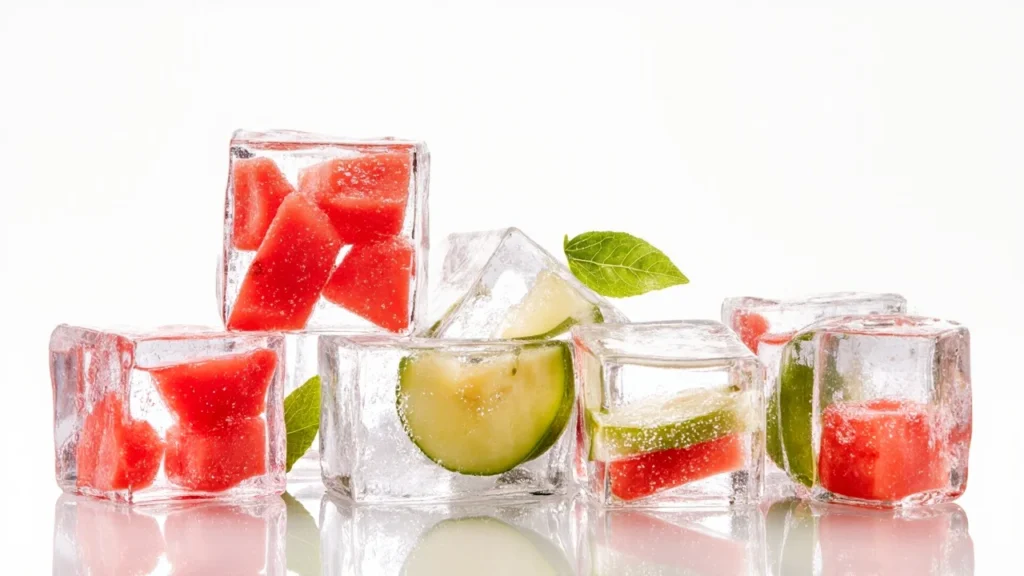
In addition to the water, it's always the best option for hydration, to your pets, there are also other alternatives, which may be useful to supplement the dietary intake of fluids, especially if your pet is not such a huge fan of the water, or if you want to become a far more attractive and pleasing. These extra precautions will help to ensure that it stays well-hydrated, and comfortable during your rides in the heat.
1. Ice, Fruit, nuts
A simple and fun way to keep your pet hydrated is to provide ice, fruit, nuts. Lots of fruit, such as watermelon, apples (no seeds), melons and strawberries have a high water content, and, when frozen, can be transformed into snacks, refreshing, and tasty for your pet. It not only helps hydrate, but it also provides a time to have fun.
For the ice maker to the fruit, just cut the fruit into bite-size pieces and place them in the cups of ice water. When you freeze it, you have ice cubes and tasty, you are going to delight your pet, and help you cool down. Please remember to always deliver the fruits that are safe for your pets. Avoid grapes and stone fruitsbecause it can be toxic to dogs and cats.
2. Coconut water
To coconut water it is an excellent choice for hydration, to your pet, especially for trips on hot days. It also contains essential minerals such as potassium and sodium, which will help to replace the electrolytes lost in the heat of the body. Coconut water is a natural alternative that can be offered, in addition to the regular water.
Always a choice coconut water, without added sugar or preservativessince artificial ingredients can be harmful to the health of your pet. As with any other food or drink in the new, look at the reaction of your pet when you enter the coconut milk in the diet of it, offering up a very small amount at first. Many dogs love the taste and refreshing, but it's always a good idea to be cautious with new foods.
3. Wet Food
If your pet has difficulty in drinking-water, you can use the wet food as an alternative to help with hydration. To feed wet, or even food, such as stewed meat, carrots, cucumbers, and squash are rich in water, and it can help you to supplement your fluid intake.
Wet food is particularly beneficial for pets who do not like to drink a lot of water. They will provide you with a good amount of liquid, as well as being tasty. Also, you can mix the dry food with a little broth, natural chicken with no salt in it to make it more flavorful, and moisturizing.
4. Ice-cream Home-made-for Pets -
The other option is a refreshing and delicious, they are the ice-cream home-made-for pets -. There are many simple recipes on the internet that uses all natural ingredients and are safe for cats and dogs, such as purees, fruit, natural yoghurt, without sugar, and even coconut milk. These creams are an excellent way for you to make for your pet to have fun and at the same time, to keep yourself hydrated.
You can cook your ice cream in cups, ice, or shapes, on their own snacks, and give as a gift to your furry friend after a long trip. Remember, if you do not use ingredients that may be harmful tosuch as, chocolate, artificial sweeteners, or milk, which contains lactose free (if your pet is a narrow-minded).
In order to prevent Dehydration, Care for Special Pets for Elderly or ill Health
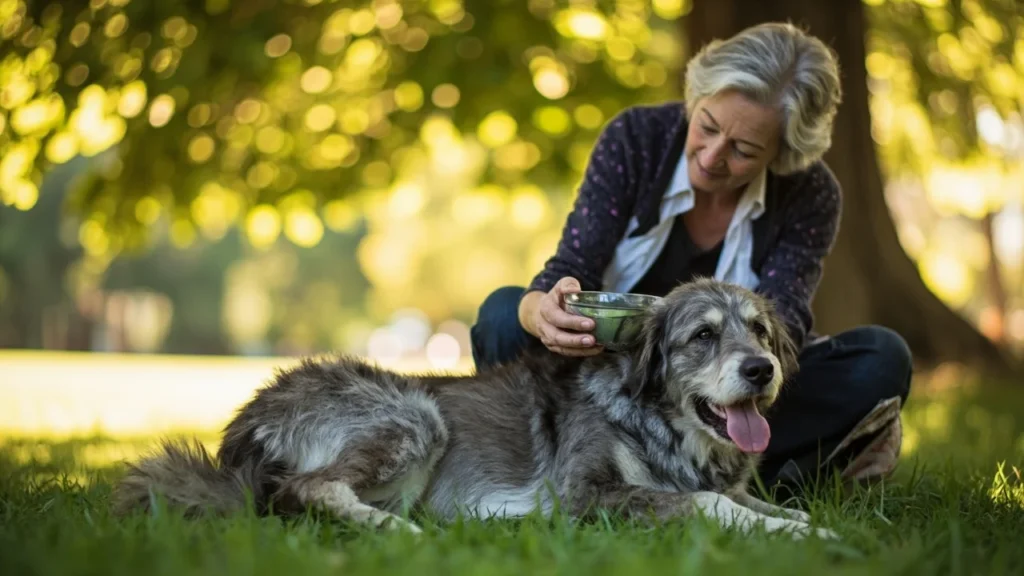
If you have a pet, more of an old or a medical condition, such as heart disease or respiratory problems, it's even more important to keep an eye on your hydration. Your Pets are older or with health conditions, pre-existing illnesses are more susceptible to dehydration and heatfor this reason, it is essential to take extra care.
1. Frequent Monitoring
Your Pets are older, may have trouble regulating your body temperature, so it is necessary to to monitor the temperature of them often. Please, pay attention to whether they're slow, out of breath, or don't seem to be enjoying the ride, as they used to. If this is the case, it's important to take breaks more frequently, providing water that is constantly and is always looking for the shade.
If your pet has a medical condition, such as heart, lung or kidney disease, and the risk of dehydration is increased even more. For this reason, always check with your vet before doing longer rides, or if the weather is too hot.
2. To Avoid Long Rides
For dogs and cats that are older or with health issues, it's best to avoid long walks, or very strong, especially on a hot day. The intense physical activity may increase the risk of dehydration and related problems of heat, such as sunshine duration.
If your pet has a medical condition, priors can be quite busy at times, more fresh produce, and always closely monitoring the hydration of it. To opt-out environments of fresh produce, such as the interior of the house, or in places with a lot of shade, it can also be an excellent way to keep your pet comfortable and dry.
3. Hydration pack with Add-ons
For pets with kidney problems, difficulty in swallowing liquids, some veterinarians recommend the use of supplements, hydration and / or electrolytic solutions, to aid in the replenishment of the liquid. These add-ons can be mixed with water or food, and are a great way to keep the moisture constantespecially in situations of high risk.
To ensure hydration of your pets for walks on warm summer days, not just as a preventative measure, but it's a gesture of affection and responsibility for the well-being of your furry friend. The hydration of the seminar should be a top priority, especially at times of intense activity, such as walking. If you follow the tips I've shared in this article can ensure that your trips are not only fun, but also safe and healthy for your pet.
Make sure to prioritize the health and comfort of it, watching for signs of fatigue, providing water that is constantly and making a break for the rest. With a little bit of planning and care are simple to do, and their trips are always enjoyable and stress-free to ensure that your furry friend if you keep a happy, healthy and well-hydrated.
The Main Points Discussed Were:
- The importance of the hydration of your pets for their health
- How to identify the signs of dehydration in dogs and cats
- Practical tips and tricks to keep in the moisture of your pets for walks on warm summer days,
- Alternatives to cooling, to encourage the intake of fluids, such as ice, fruit, coconut milk and wet food
- Special care for the pets for elderly or ill health, including frequent monitoring, hydration, with add-ons
Frequently Asked questions (FAQ).
- How do I know if my pet is dehydrated? Look for other signs such as dry mouth, gums, parched and burning. If you notice any of these signs, give it water immediately and consult a veterinarian if necessary.
- Can I give coconut water to my pet? Yes, coconut water is a good choice for hydration, but always in moderation. To avoid the versions sweetened.
- What fruit may I offer you my pet for the hydrate? Some fruits, such as watermelon, apples (no seeds), and melons are a good choice to keep your pet hydrated and healthy.
- What is the best way to carry water during the tour? Use the bottles as well as drinking fountains, portable to facilitate the supply of water to your pet during the trip.
- How do I hydrate my pet, and if he doesn't like to drink water? Experiment with other alternatives such as ice, fruit, coconut water, or wet food, you can attract the most interest from your pet, and help you stay hydrated.

